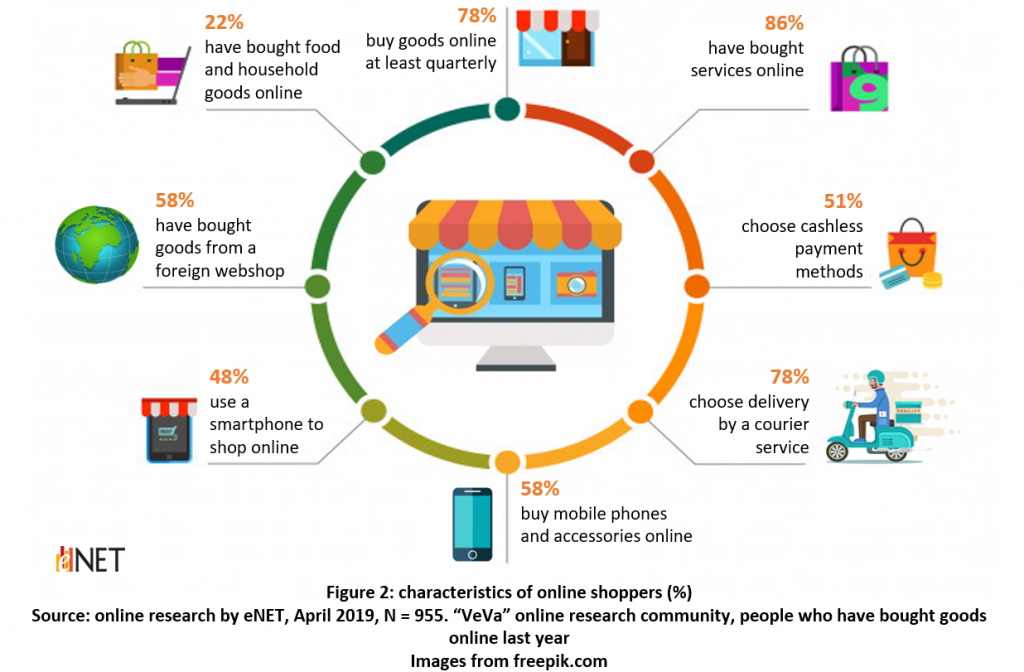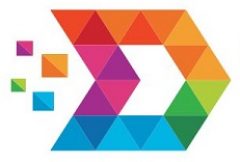Close to 5.4 million Hungarians, or 91% of adult internet users shop online regularly. As this number would be difficult to increase much further, e-commerce could be expanded by raising the purchase intensity. The proliferation of online shopping for food and household goods is expected to strongly contribute to that; 1.2 million people have so far used such services. The latest iteration of eNET’s regular (annual) e-commerce research focuses on online shopping trends.
How long can the number of online shoppers continue to increase?
According to eNET’s online research in April 2019, as much as 91% of adult Hungarian Internet users (i.e. 5.4 million people) bought goods on the internet at least once in the past year. Since May 2017, their number has grown by 800,000. This indicates that the increase in the number of online shoppers will probably slow down because there is not much room for further growth. So the emphasis will shift to higher purchase intensity (i.e. what products are bought for what average prices, how frequently). This could constitute the basis of further significant e-commerce growth in Hungary.
Concerning the frequency of transactions, e-shoppers are already quite active as 78% buy goods online at least once a quarter. The majority (60%) buy six or more product categories on the internet; the top 3 are the following: mobile phones and their accessories (58%); clothes and their accessories (57%); as well as toys and presents (53%). As to services, purchased by 86% of online shoppers, accommodation clearly dominates (60%).

Main trends in online shopping
In the past few years, the most dynamic expansion was registered among those who bought online on smartphones, people preferring cashless payment, and customers of foreign webshops or auction sites.
Laptop and desktop computers have remained the most frequent devices used for online shopping (52% and 51%, respectively), but smartphones are gaining ground, as their share rose from 30% to 48% since May 2017.
The issue of payment methods used to divide even regular online shoppers: about as many people preferred cashless payment as handing over cash, and an equally large group used both methods. But the situation has changed. Now much more people opt for cashless payment (51% vs. the 19% who prefer to pay cash), while an unchanged 30% are open to both methods. Regarding delivery, courier services continue to dominate, with 78% choosing this method. As payment with a bank card is offered by more and more courier companies, the share of this method is increasing (38%) in addition to the popularity of cash payment upon delivery (56%). This contributes to the proliferation of cashless payments.
The ratio of people buying goods from foreign webshops is increasing rapidly: 58% of the respondents (3.1 million people) have shopped online abroad (as well). Since May 2017, the number of these customers has gone up by almost 900,000.

Food and household goods bought online: a way to increase purchase intensity
22% of e-shoppers, i.e. 1.2 million people have bought foodstuffs and household goods online. Most of them (67%) used Tesco’s online webshop, and 27% chose Auchan’s online store, which had been launched a bit later.
Among offline-only food stores, the respondents would like to see online shopping services by Lidl (39%), Aldi (27%), Penny Market (26%) and Spar (23%). In fact, Spar launched its webshop on 6 May, even though the area served is currently limited to Budapest and neighbouring towns. The continued proliferation of online shopping services for food and household goods could greatly contribute to the expansion of e-commerce in Hungary.

